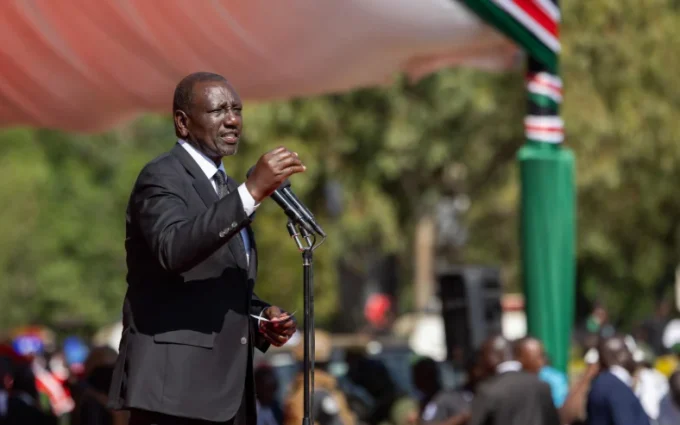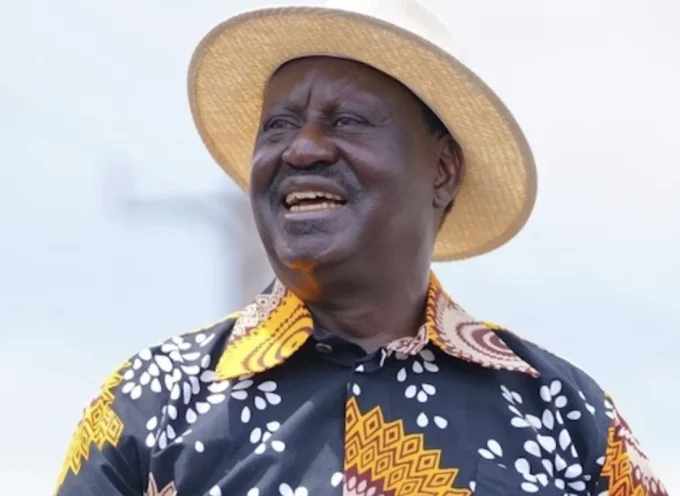With less than a week left to the elections, Kenyans are preparing for either for a Raila or Uhuru presidency. They are the only two candidates who stand a mathematical chance of clinching this country’s top seat.
Kenyans have, however, had a taste of a Uhuru presidency, so it will be good to speculate on how a Raila presidency will be, if he wins next Tuesday’s contest. At least, we shall be prepared for a change; it won’t find us in shock.
Kenyans have been used to Raila as a rabble rouser including when he was in government first as a Cabinet minister then as Prime Minister in the Grand Coalition Government.
According to Mohamed Doyo, a communication and governance expert, who is an ardent advocate for a Raila government, his ascension to power will cause a paradigm shift that would see Kenya become a better society.
“We have had presidents from two communities since independence, in a country of more than 42 tribes. This would have gone up to 2032, almost 70 years after independence. It will be a new dawn for Kenya, a history in the making. Instant change will be felt, as Raila comes from a revolutionary kind of dispensation,” says Doyo.
We look at how his government would be for a person who has been the government’s biggest critic of all the time. Would he have a perfect government?
Scandals and corruption
In an article published by the Nation Newspaper, the Ethics and Anti-Corruption Commission (EACC) admits that Kenya could be losing a third of the national budget through corruption.
Raila has been a whistleblower when it comes to scandals, from the NYS scandal where more than Ksh800 million was lost, the health scandal where containers were imported from China at an estimated value of ksh10 million each but a true value of Ksh250,000 each, to the Eurobond scandal, Mexico maize scandal and others.
In a promise to Kenyans during the presidential debate, Raila said that the Nasa coalition has agreed that “no member of their club (Nasa), including their relatives would do business with the government and action would be taken against any public servant who would be found engaging in corruption.”
If we are to go by his words, it means that corruption will be mitigated from the top downwards. This would be a good move as senior officers would lead by example, and the ‘what do you want me to do?’ stance taken by President Uhuru will be a gone case.
“Nasa recognises that corruption is the most destructive interlocutor to good governance; and a monumental national security threat; it kills, stifles and cripples social, political and economic development and destroys citizens’ morale, aspirations and patriotism,” reads the Nasa manifesto.
Social injustice and the TJRC report
We live in an era of ‘moving on’ whenever injustice is done. According to the TJRC report which was as a result of the Truth, Justice and Reconciliation Act 2008, justice is a pre-requisite for reconciliation, rather than a substitute for it. In other words, reconciliation cannot be achieved unless the parties involved have received justice. Raila has been on the forefront advocating for the implementation of the TJRC report. This will give justice to victims of social injustice and the perpetrators since independence, if properly implemented. This will be the genesis of national healing and reconciliation to Kenya.
Social progress
“There shall be focus on the social well-being of all Kenyans especially the social groups like single mothers and senior citizens,” says Doyo.
There has been a kitty for the senior citizens which will from next year provide monthly stipends for citizens above the age of 70 years. However, no government has ever had a policy on single mothers; hence a Raila-led government will be the first one.
Institutional growth and independence
It is argued that a fourth arm of the government (the independent commissions) was birthed in Kenya’s 2010 constitutional dispensation to join the pre-existing three arms of the government commonly acknowledged, namely, the Judiciary, the Legislature and the Executive.
Under Article 248 of the Constitution of Kenya 2010, 12 institutions have been enumerated as commissions and independent offices. The commissions include: the Teachers Service Commission; the National Police Service Commission; the Kenya National Human Rights and Equality Commission; the Parliamentary Service Commission; the Independent Electoral and Boundaries Commission; the Commission on Revenue Allocation; the Judicial Service Commission; the Public Service Commission; the Salaries and Remuneration Commission; and the National Land Commission. The independent offices are the Controller of Budget and the Auditor-General. However, such commissions and institutions have not achieved much, attributed to controlled independence especially by the executive arm.
“With a Raila Presidency, Institutions shall grow. Raila has often called for institutional independence in executing their functions. And with him at the top, they shall be facilitated to grow. They include independent commissions and the arms of government,” hopes Mr Doyo.
Unemployment
More than 800,000 youth that enter the Kenyan job market annually from Kenyan colleges and universities, with only 85,600 getting good jobs. This alone is disheartening, as every professional wishes to get a job after school. Mr Doyo says that imparting people with financial knowledge and skills, access to resources and the capacity to apply those skills and habits in making the right financial decisions will be a great breakthrough in solving the unemployment crisis facing the country.
“Setting up of a youth workforce development programme to provide significant opportunities for economic development will be key. A skilled youth workforce provides the critical skills for economic growth conseuently keeping them out of mischief(crime),” he adds.
Nasa government also intends to create more industries and investing in new frontiers with lots of potential in creating jobs e.g the ICT field, translating to more job opportunities.
Industrialization
There shall be a focus on export-industrialsation led manufacturing. Export-oriented Industrialisation (EOI) often termed as export led industrialidation (ELI) is a policy designed for the purpose of speeding up the industrialization process of a country through exporting goods for which the nation has a comparative advantage. This policy requires countries to open up their domestic market to foreign competition in return to getting access to international market.
“Examined empirical evidences reveal that export-oriented Industrialisation was particularly the characteristic of the economic development of the Asian Tigers: Hong Kong, South Korea, Taiwan and Singapore in the post World War II period. In addition to Asian Tigers, evidences also tell how EOI strategy contributed for the economic development of US, Germany and others, who are now in developed world category. In order to promote EOI and ultimately economic development, complementary policies in relation to tariffs, trade, exchange rate, and others need to be adopted and employed,” concludes Doyo.













Leave a comment